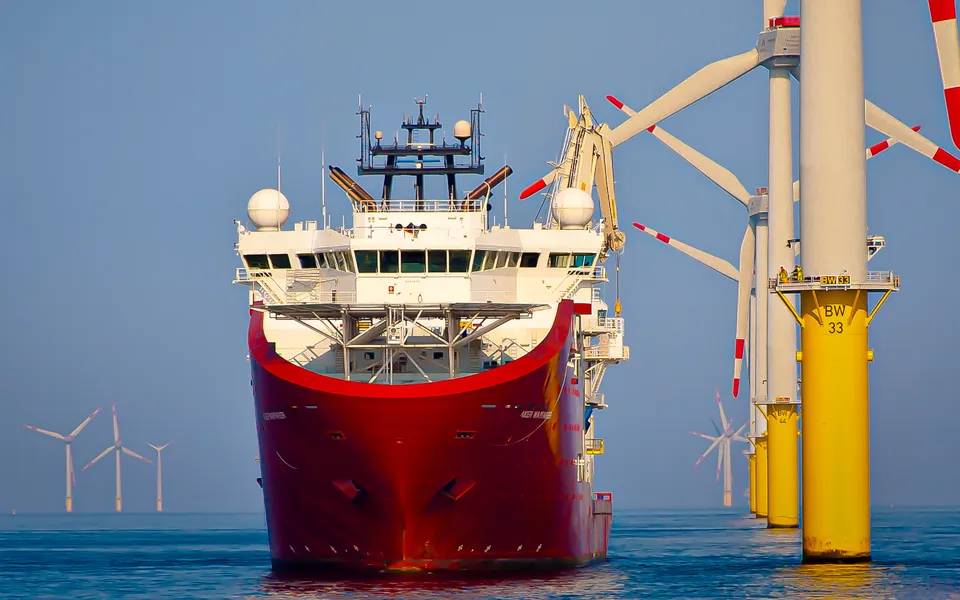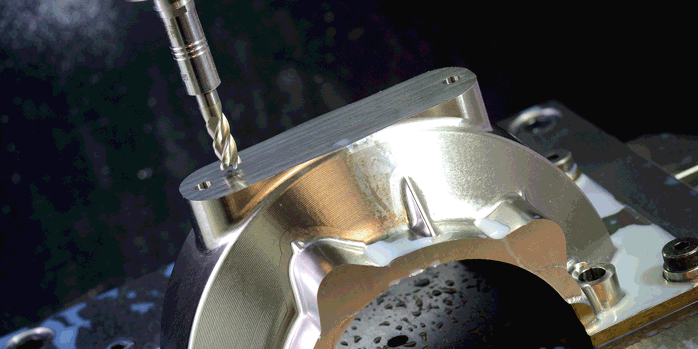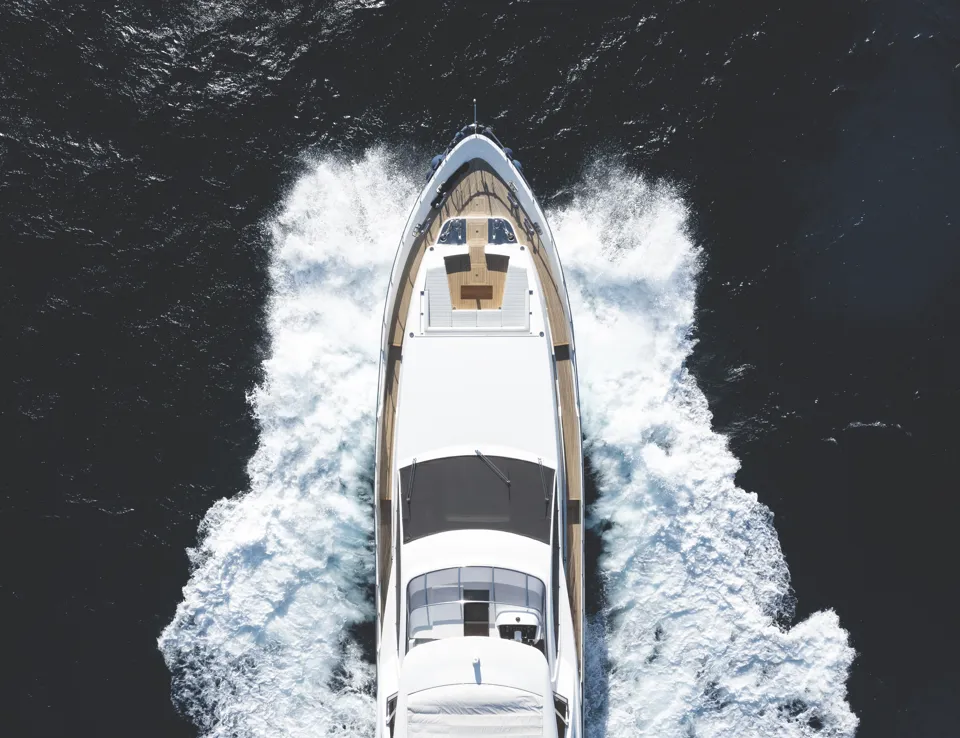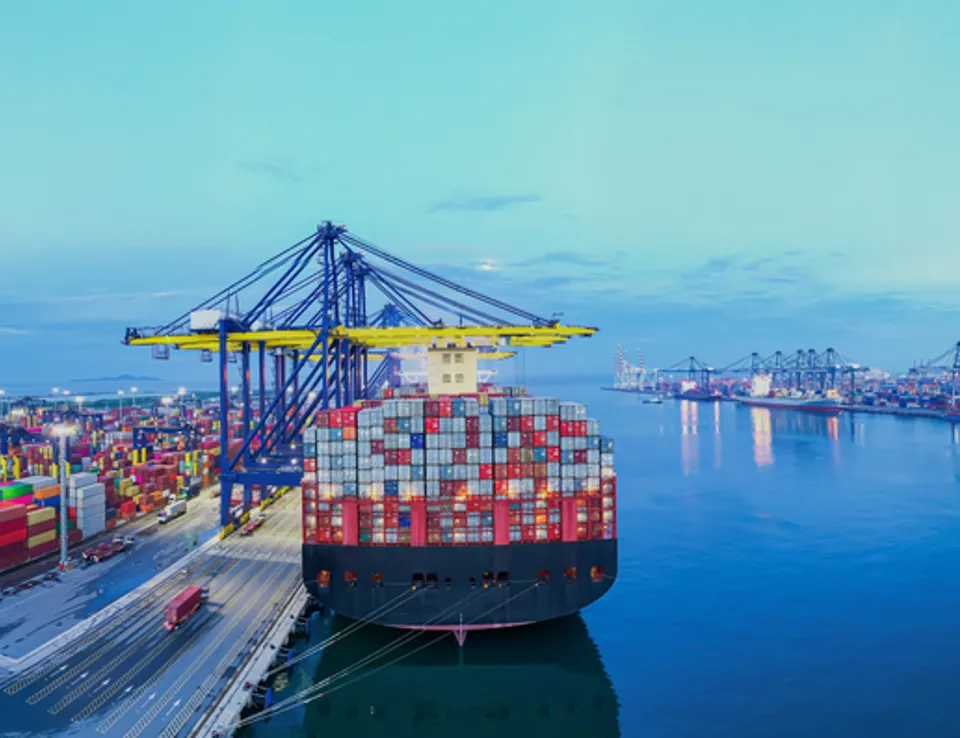
What role will electrification play in the maritime market?
10 Apr 2025
Over the last decade the maritime industry has started to embrace hybrid and electric technology, particularly in smaller vessels such as workboats, pleasure craft and ferries [1]. This growth in electrified propulsion is forecasted to continue as emissions regulations are enforced, battery technology improves, and electricity becomes more cost-effective than fuels.
But what are the advantages of switching from traditional Internal Combustion Engines (ICE) to hybrid and electric powertrains? How difficult is it to make this transition? What environmental impact will this realistically achieve?
We spoke to our maritime experts, Tim Scarbrough - Director of Marine, Temoc Rodriguez - Global Technical Expert Electrified Solutions, and Peter Trueman - Market Head Off-Highway and Marine, to understand the latest in the electrification of the marine sector.
The voyage to net zero
Like many industries, one of the biggest drivers for electrification is decarbonisation. Around 80% of the world’s goods are transported by sea, leading to the marine industry accounting for 3% of global greenhouse gas emissions [2]. To mitigate this, the International Maritime Organization (IMO) aims to reduce emissions by 30% in 2030 with the ultimate goal of achieving net zero by 2050 [3].
However, these decarbonisation strategies only apply to international shipping, so what does that mean for smaller vessels?
Tim: “There are a number of emissions regulations coming into force that target ships over 5,000 gross tonnes such as cargo, tankers and cruise ships. But there is minimal emissions legislation for the next threshold down of over 400 gross tonnes, which encompasses smaller vessel types. Although, this may change in the future. The EU Emissions Trading System is discussing widening the scope and the IMO have put a line in the sand to re-evaluate these thresholds in 2028. The UK Department for Transport has also recently issued a call for evidence (CfE) regarding the decarbonisation of smaller vessels [4}. The finding of this CfE is expected to be published in October and will be used to guide policy making for this subsector.”
“We are also seeing ports introduce hybrid and electric vessels to help meet their own carbon footprint and ESG targets, and national governments implement zero emissions zones to improve the air quality of the local environment. For example, Norway will require cruise ships, tourist boats and ferries less than 10,000 GT travelling through the West Norwegian Fjords to be fully zero-emissions by 2026 [5]. So smaller vessels are likely to face emissions regulations in the near future.”
Ricardo experts explain how the CfE will affect businesses now
Benefits of electrification for marine
With legislation not yet pushing smaller vessels towards electrification, why should owners and fleet operators consider switching to hybrid and electric propulsion now?
Peter: “The main advantage is reduced greenhouse gas emissions which not only contributes to the wider decarbonisation of the marine sector, but on a local scale, improves the air quality and therefore comfort of passengers onboard. Furthermore, the Electric Drive Unit [EDU] used to power the propellers is much more compact and quieter than an engine and there are no vibrations through the hull. The EDU can also be positioned near the output propeller shaft, freeing up space in the engine bay. All these factors combined deliver a more pleasant boating experience for the passengers and crew.”
Temoc: “From a performance perspective, electric motors provide peak torque instantly, whereas an ICE needs to build up engine speed, so hybrid and electric vessels benefit from instant acceleration and easier manoeuvrability. Electric powertrains also typically have lower energy consumption than ICEs. While hybrids have the potential to use electric power for low loads so that the engine can run at higher rpms, in a more optimum operating range. But having enough battery capacity to achieve that optimal mix of energy very much depends on the duty cycle of the vessel.”
Tim: “There are also some cost benefits as well. Although installing a hybrid and electric powertrain comes with an upfront cost, they typically require less maintenance. This not only minimises repair costs, but also time spent out of service, which is much less for electrified vessels. This reduces the Total Cost of Ownership [TCO] quite significantly when compared to ICE’s.”
“Furthermore, the increasing pressure to decarbonise fuels will lead to a shift from fossil fuels to electrofuels. Electrofuels are made using electricity which will ultimately make them more expensive than direct electric power in the long run.”
Hybrid or electric for marine?
To leverage these extensive benefits, it’s important to understand which powertrain suits which boat type. Unfortunately, with such a variety of vessel sizes, weights and journeys, there is no universal rule dictating this, the decision between hybrid and electric propulsion depends on the duty cycle of each individual vessel.
Temoc: “You have to start with the missions each vessel runs. If the journeys are predictable routes from point to point with little variation, then it is easy to estimate the energy requirements and where to recharge, so these types of vessels are best suited for full electric powertrains.”
“When the missions are less predictable and no longer point to point, such as in open waters servicing oil rigs or wind farms where there are often additional operations, electric powertrains make less sense because you could run out of energy. So that’s where hybridisation comes in, as you have the safety net of the engine to provide additional power.”
Peter: “There are also some applications such as rescue craft and vessels that serve the offshore industry that must operate on standby, idling for hours before being instructed to move immediately. A diesel engine in this scenario is undesirable from both an emissions and comfort point of view. But an electric powertrain risks running out of energy. However, a hybrid system delivers that instant power from the motors, minimises emissions but also has the backup of the engine.”
Technical challenges of electrification
Once the type of powertrain has been determined, just how difficult is it to integrate a hybrid or electric powertrain into a vessel, particularly those that need to be retrofitted?
Temoc: “Many boats currently use electric driven propellers powered by battery banks, so there are already standardised ways of distributing electric power throughout a boat. The new challenge is the increased energy capacity that needs to be carried onboard and integrated safely. With new builds, it’s likely that extra batteries will fit in the space where the fuel tanks used to be, however with retrofits this may be more difficult and result in taking up some cargo space. Our experience in battery module and pack design enables us to design bespoke systems tailored to the energy requirements and the physical layout of the vessel.”

Peter: “When it comes to the driveline, the EDU operates at much higher torque and speed than an ICE, so the transmission needs to be capable of reducing the speed of that fast-running motor down to a much slower speed to drive the propellers. This is where we leverage our experience in motorsport and automotive because we are used to dealing with high torque loads coupled with large drops in speed ratio and at the same time maintaining reliability and durability.”

“We use precision engineering to develop fine gear geometry using high quality materials and advanced heat treatment processes to achieve gearboxes with high efficiency. This not only means we minimise heat generation and noise, but also extract as much range out of the battery as possible.”
Learn more about the technical challenges and opportunities of electrifying small marine vessels
The halo effect
When you consider total global carbon emissions, the 3% resulting from the marine sector seems like a relatively small number. With the bulk of those emissions coming from larger vessels, how much of an impact will electrifying small boats actually have?

Temoc: “The large ships, fishing vessels and tug boats account for the majority of marine carbon emissions, but the size and journeys of these vessels mean they are not good candidates for electrification with current technology. This leaves smaller vessel types which are more suited to being electrified, so this is where we can start to reduce emissions and make a difference.”
Peter: “The electrification potential of the smaller boat market could actually make it a halo platform for the wider marine industry, similar to how motorsport is a proving ground for automotive and off-highway technologies. When you look at niche applications such as crew transfer vessels to wind farms, there is a big push to generate green electricity, yet we maintain these wind farms with diesel powered boats. To me, that makes no sense, particularly when these boats typically go from a port which is connected to the grid, travel 10 miles to wind farms, which are also plugged into the grid. We need to be pushing electrification in these areas.”
Tim: “The smaller vessels present a great opportunity to make the electrification use case work. Even if we are not going to significantly move the dial on global greenhouse gas emissions, using smaller vessels to demonstrate the technology might then lead to an accelerated roll out on the larger vessels which will have a global impact.
As a society we must decarbonise all areas, otherwise we will not achieve net zero by 2050. We can’t go from a standing start and electrify the larger vessels immediately. So instead, we can learn from the smaller vessels first and reduce emissions wherever possible in the meantime.”
Wherever you are on your decarbonisation journey, contact Ricardo to see how we can support you.
References
[1] Electric Boats & Ships 2024-2044 [Online]. IDTechEx.
[2] T.F., M.A., 2024. Reducing barriers to maritime fuel projects is key to decarbonizing shipping [Online]. World Economic Forum.
[3] IMO’s work to cut GHG emissions from ships [Online]. International Maritime Organisation.
[4] Decarbonising smaller vessels. 2025. Department for Transport.
[5] 2024. Establishing zero emissions requirements for cruise ships, tourist boats and ferries in the World Heritage fjords [Online]. Norwegian Maritime Authority.
Subscribe or ask us a question
Subscribe for updates or get in touch with our experts about your maritime decarbonisation challenges












